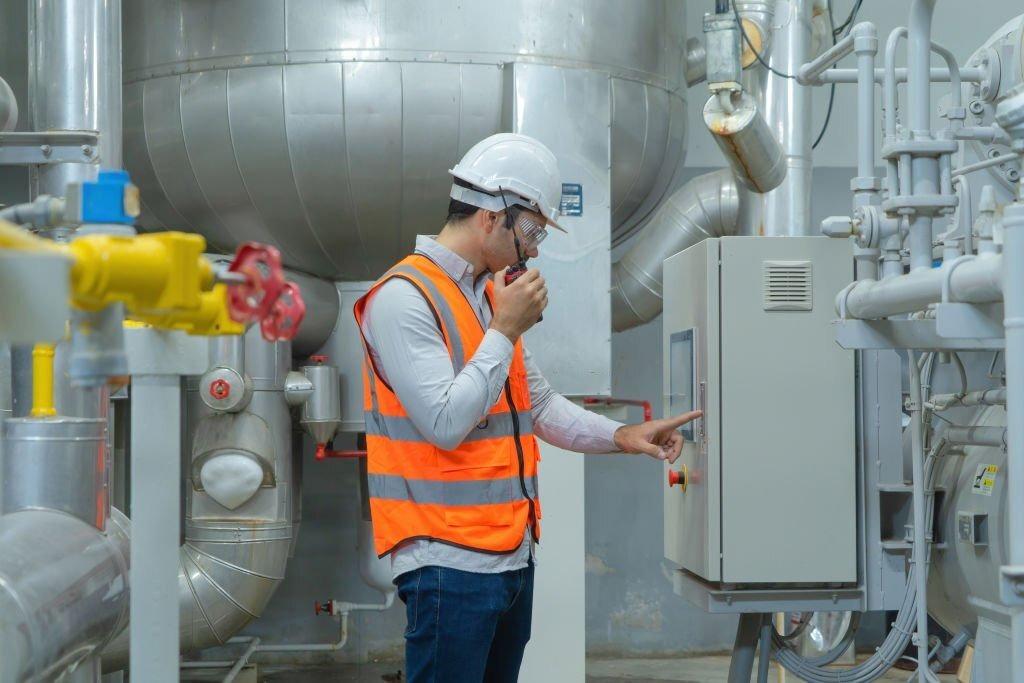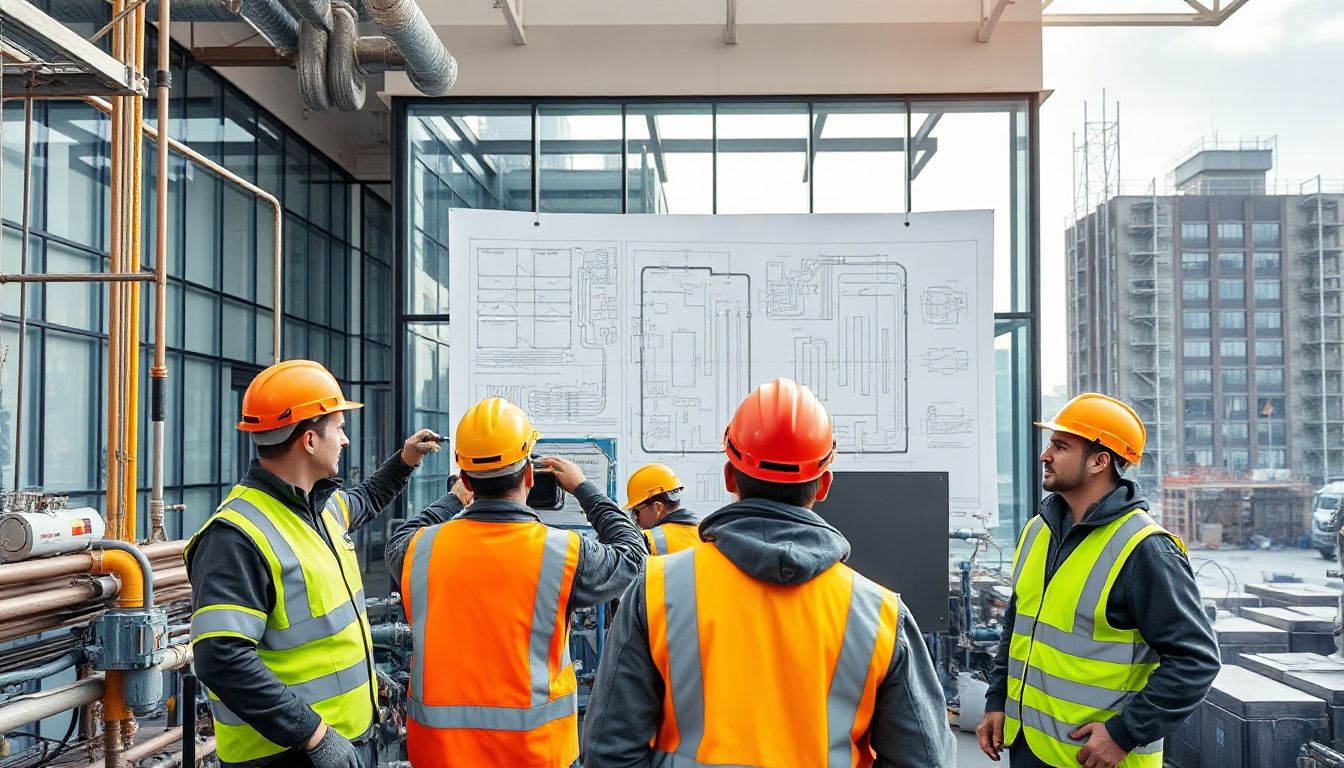
Comprehensive Guide to MEP Solutions in Middle Eastern Countries

Comprehensive Guide to MEP Solutions in Middle Eastern Countries
Introduction
Middle Eastern countries are racing ahead with big construction projects. MEP (Mechanical, Electrical, and Plumbing) solutions play a vital role in this growth. These systems keep buildings comfortable, safe, and energy-efficient. But regional challenges like extreme heat and sandstorms create unique demands for MEP design and installation. This article explores how Middle Eastern nations are adopting tailored MEP solutions, the key players involved, and the future tech trends shaping the industry.
The Role of MEP Solutions in Middle Eastern Infrastructure Development
Economic and infrastructural growth in the Middle East
The Middle East is witnessing explosive growth in infrastructure. Countries like the UAE, Saudi Arabia, and Oman aim to diversify their economies through big projects. For example, Dubai’s Expo 2020 alone involved billions spent on construction, with advanced MEP systems integral to the planning. Similarly, Saudi Arabia's Vision 2030 emphasizes mega-development projects that include smart buildings and industrial zones.
This rapid expansion makes MEP solutions essential. They improve construction efficiency and make projects sustainable. Smarter systems help reduce energy use and meet tough safety standards, keeping regions modern and environmentally friendly.
Key sectors benefiting from MEP solutions
- Commercial and residential buildings: Office towers, apartment complexes, and malls depend on efficient HVAC, lighting, and plumbing.
- Industrial facilities and oil & gas: Factories and refineries need specialized systems to operate safely and efficiently.
- Hospitality and entertainment venues: Hotels and theaters demand reliable plumbing, climate control, and electrical setups to welcome guests comfortably.
Challenges faced in implementing MEP systems regionally
Building in the Middle East isn’t simple. High temperatures push cooling systems to their limit, and sand infiltration tests HVAC equipment continuously. Skilled workers can be scarce as complex MEP systems require specialized training. In addition, strict local safety and building standards mean solutions must meet high benchmarks. All of these factors make regional MEP project planning both challenging and rewarding.
Major Countries Leading in MEP Implementation
United Arab Emirates
Dubai and Abu Dhabi are front-runners in MEP innovation. The UAE's MEP market benefits from huge projects like the Dubai Metro and Expo 2020. These showcase advanced cooling, electrical systems, and smart building integrations. Companies like Dutco Tennant LLC dominate this space, providing cutting-edge solutions for high-profile developments.
Saudi Arabia
Saudi Arabia pushes huge infrastructure plans like NEOM—a city built from scratch with sustainability in mind. Riyadh Metro is another massive project advancing MEP standards. The government actively promotes eco-friendly systems, such as solar-powered electrical setups, for new developments, driving the industry towards greener options.
Oman
After hosting the FIFA World Cup, Oman upgraded its infrastructure. It focused heavily on energy-efficient MEP systems suited for the desert climate. Oman’s emphasis on resilient, sustainable solutions helps reduce water and energy consumption, which are critical in a country with limited natural resources.
Other Emerging Markets
Oman, Bahrain, and Kuwait are not far behind. These nations are investing more in regional collaborations and cross-border MEP projects. With governments encouraging private investment, upcoming projects will further push the adoption of innovative MEP solutions across the Gulf.
Key Components and Technologies in Middle Eastern MEP Solutions
Mechanical systems
HVAC systems in the Middle East are no longer just about cooling—they must fight extreme heat and sand infiltration. High-efficiency chillers, smart vent systems, and advanced filters keep indoor air clean and cool, even on the hottest days.
Electrical systems
Smart grids and renewable energy sources are reshaping electrical setups. Many new buildings utilize solar panels integrated straight into their electrical systems, reducing reliance on the grid. High-efficiency electrical equipment helps cut down on power consumption and lower bills.
Plumbing and water management
Water scarcity makes efficient plumbing crucial. New systems include water-saving fixtures and desalination-powered water supplies. Some buildings recycle greywater for landscaping, turning scarcity into sustainability.
Innovative technologies and trends
- Building Management Systems (BMS): Automate HVAC, lighting, and security for efficiency.
- IoT and AI: These smart systems monitor equipment health and predict repairs before failures occur.
- Green certifications: LEED and Estidama influence MEP design, pushing for eco-friendly solutions that save energy and water.
Leading MEP Solution Providers and Industry Players
Local versus international companies
Local firms like Al-Futtaim Engineering lead with tailored solutions suited for the region’s climate. International giants like Siemens and Johnson Controls add global expertise, collaborating on large projects for optimal results.
Strategic partnerships and collaborations
Joint ventures between local and international companies help combine regional knowledge with advanced technology. Successful examples include partnerships to develop smart building systems or renewable energy installations in urban centers.
Future outlook for MEP service providers
Providers are focusing on sustainability and future-proof solutions. They plan to expand into new mega-projects and incorporate cutting-edge tech that maximizes resources and minimizes costs, ensuring they stay ahead in this competitive landscape.
Future Trends and Opportunities in Middle Eastern MEP Solutions
Focus on sustainability and green buildings
Regulations now favor green certifications like LEED and Estidama. MEP systems are evolving to meet these standards. An example: buildings with advanced insulation, solar power integration, and water recycling functions.
Digital transformation and smart systems
IoT and AI are changing how MEP systems operate. Smart systems can analyze data, optimize performance, and reduce energy waste automatically. This leads to lower costs and smoother operation for building managers.
Potential for renewable energy integration
Solar power is abundant in the Middle East. Many MEP designs now include large-scale solar panels and wind turbines. Governments encourage these initiatives to cut reliance on fossil fuels.
Challenges and risks ahead
Supply chain issues can delay material delivery, impacting project timelines. Additionally, changing regulations and standards can require quick design adjustments, which may challenge project schedules and budgets.
Conclusion
MEP solutions are vital to Middle Eastern development. As projects grow bigger and more complex, tailored and sustainable systems become a must. Innovation, regional expertise, and a focus on green technology will drive this industry forward. Stakeholders who embrace smart, energy-efficient solutions will lead the way into a sustainable, more efficient future. The Middle East’s infrastructure boom will depend on how well MEP solutions adapt and evolve with these emerging trends.
There are many variations of passages of Lorem Ipsum available, but the majority have suffered alteration in a our some form, by injected humour, or randomised words which don't look even slightly believable. If you are going our as to use a passage of Lorem Ipsum, you need to be sure there isn't anything embarrassing hidden in the middle the of text. All the Lorem Ipsum generators on the Internet tend.
